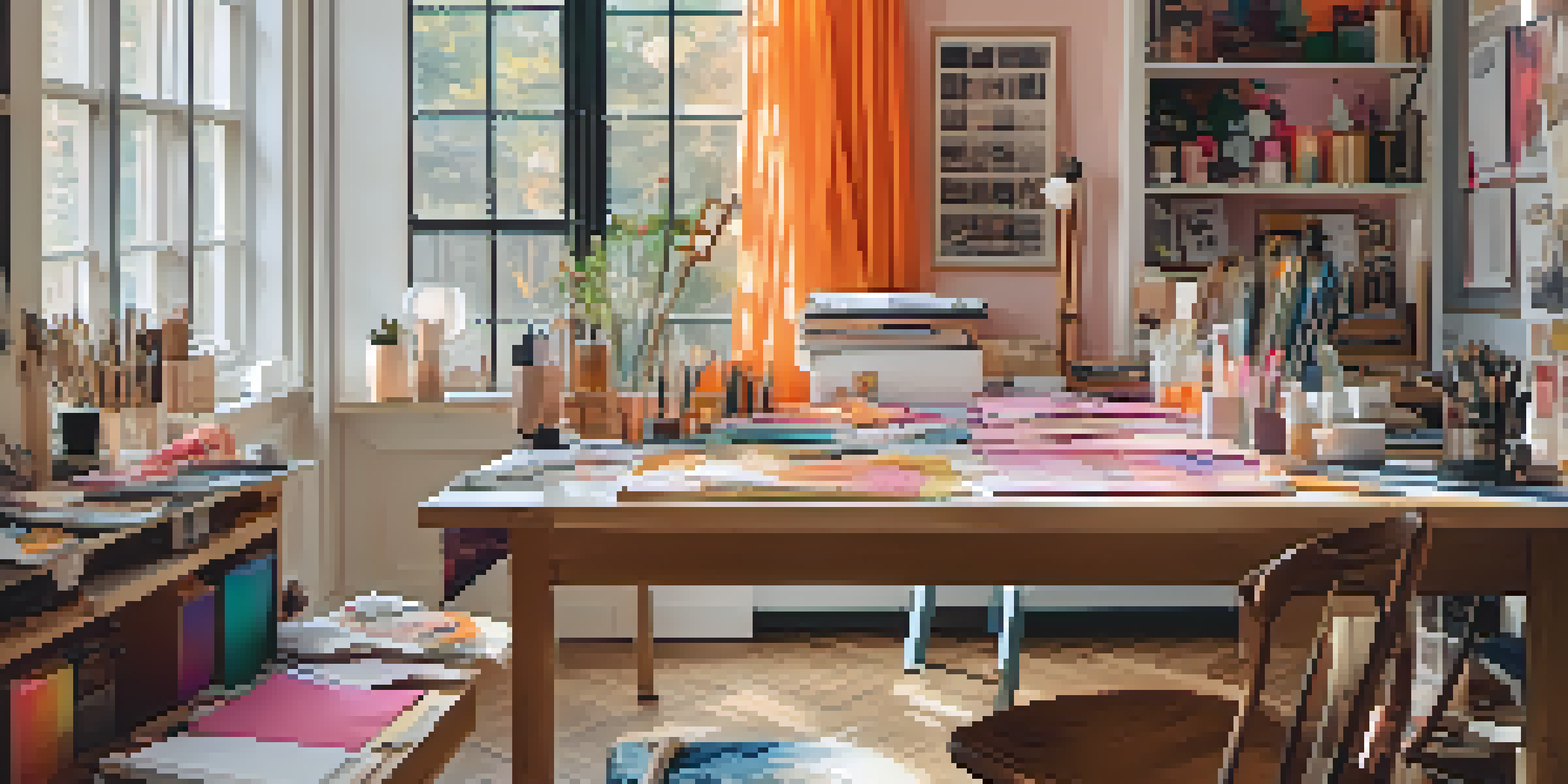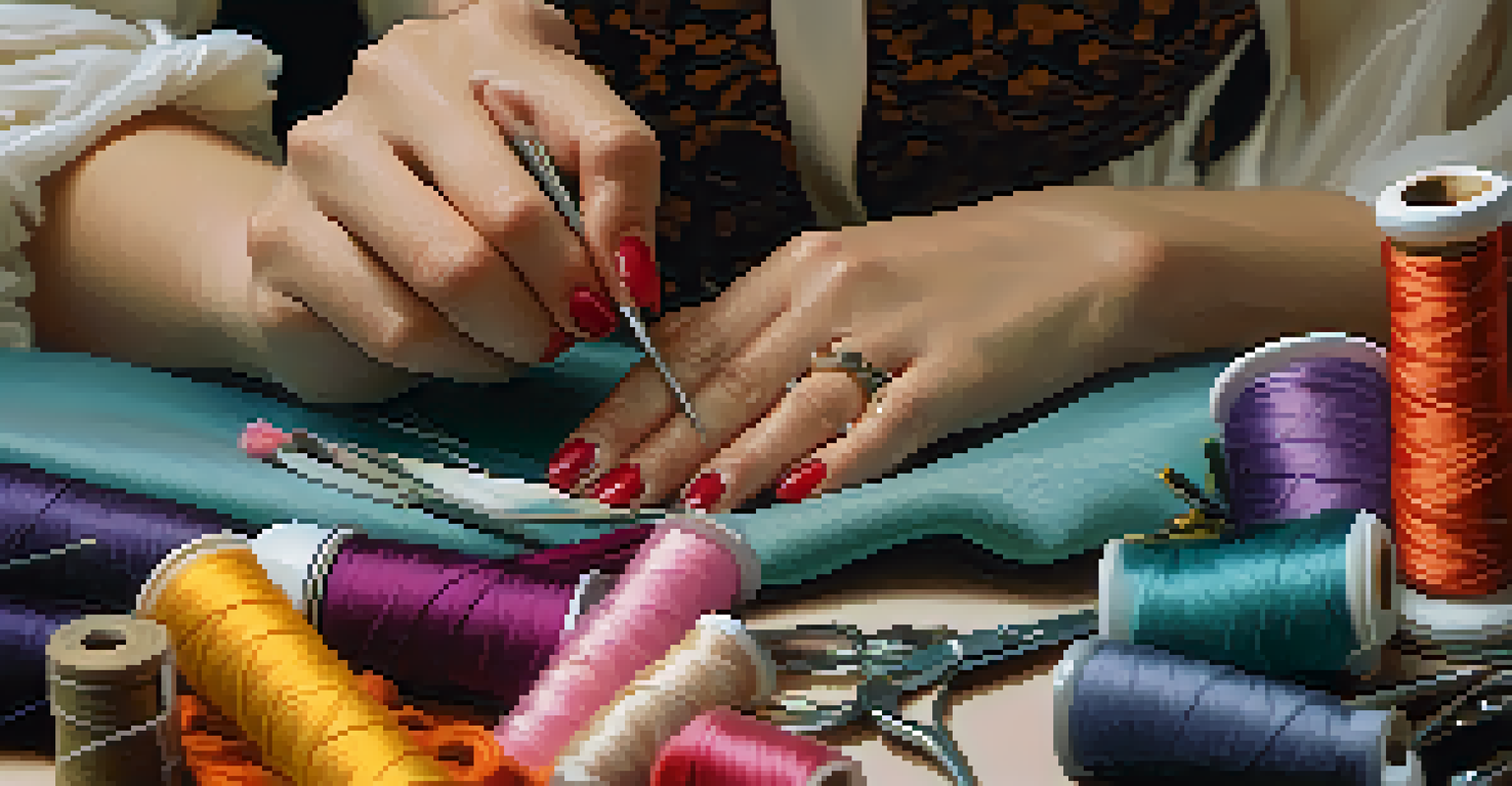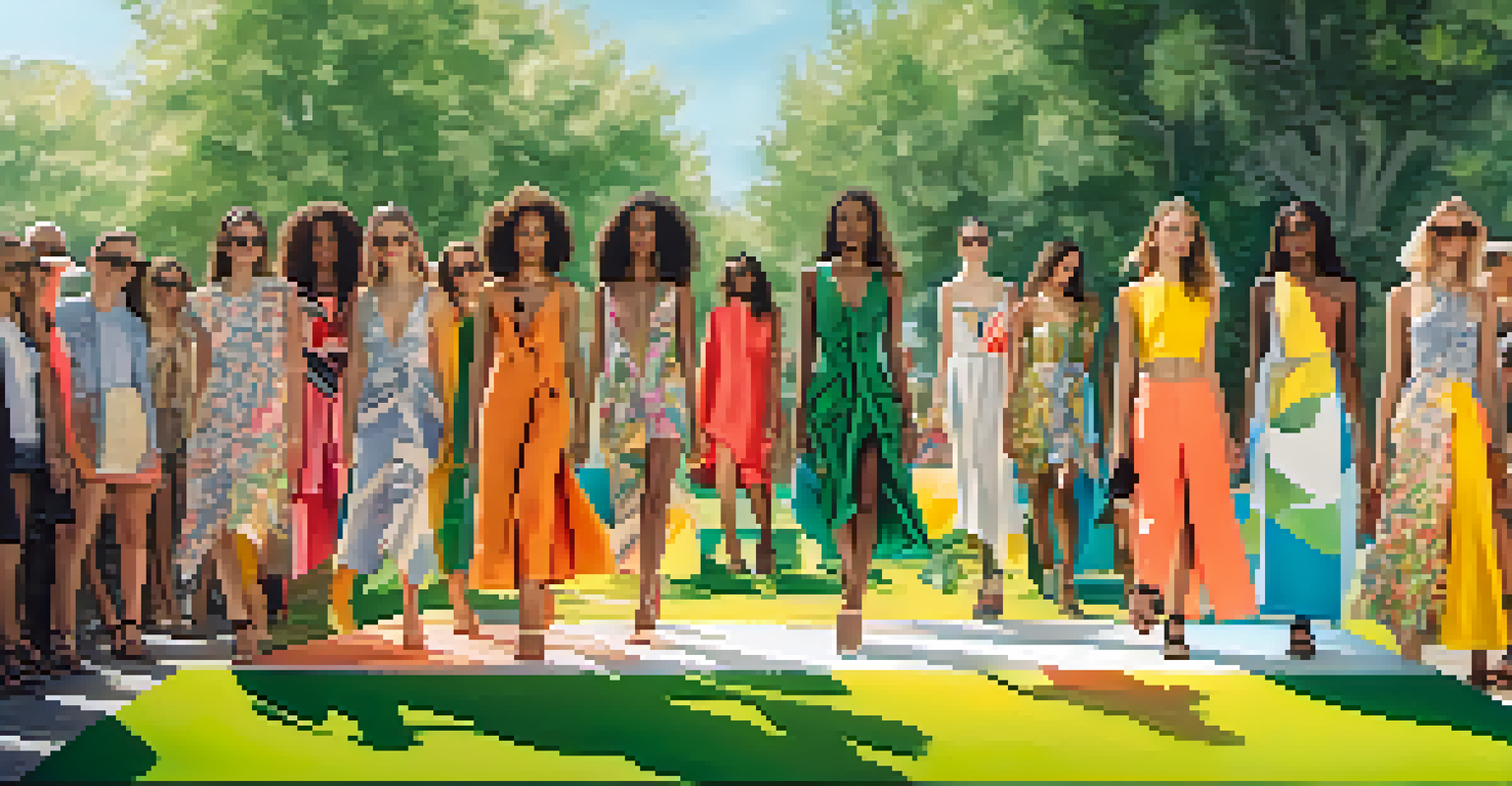Freelance Fashion Designers: Shaping the Future of Style

The Rise of Freelance Fashion Designers in the Industry
Over the past decade, the fashion industry has witnessed a remarkable shift towards freelance design. This change is driven by a blend of technology, creativity, and a growing desire for individuality in fashion. Freelance designers bring fresh ideas and unique perspectives, challenging traditional norms and practices.
Fashion is about dreaming and making other people dream.
As brands seek to diversify their offerings and connect with niche markets, freelance designers have become invaluable assets. They provide specialized skills and innovative designs without the overhead costs associated with hiring full-time staff. This flexibility allows brands to adapt quickly to ever-changing trends.
Moreover, the rise of social media platforms has empowered freelance designers to showcase their work directly to consumers. This direct connection can lead to greater visibility and opportunities, allowing designers to build their brands and client bases organically.
Embracing Technology: Tools of the Trade for Freelancers
Technology has transformed the way freelance fashion designers operate, making it easier than ever to create and share their work. From advanced design software to online marketplaces, freelancers now have access to a plethora of tools that streamline the design process. These resources facilitate everything from sketching initial concepts to managing client relationships.

Additionally, platforms like Instagram and Pinterest have become crucial for freelancers to showcase their portfolios. These visual-centric platforms allow designers to reach a global audience, helping them gain recognition and build a loyal following. The ability to share work instantly has revolutionized networking in the fashion industry.
Freelancers Drive Fashion Innovation
Freelance fashion designers bring fresh ideas and unique perspectives, challenging traditional norms in the industry.
Moreover, e-commerce solutions enable freelancers to sell their designs directly to consumers. This not only increases profit margins but also allows designers to maintain creative control over their work, ensuring that their vision is realized in the final product.
Sustainability and Ethical Practices in Freelance Fashion
As the world becomes increasingly aware of environmental issues, freelance fashion designers are stepping up to promote sustainability. Many are prioritizing eco-friendly materials and ethical production processes, leading the charge for a more responsible approach to fashion. This focus on sustainability resonates with consumers who are looking to make more conscious purchasing decisions.
The best part of fashion is that it’s a form of self-expression, and every designer has a unique story to share.
Freelancers often have the flexibility to experiment with innovative materials and techniques that larger brands may overlook. This willingness to take risks can result in exciting new trends that prioritize both style and sustainability. For example, some designers are incorporating upcycled fabrics or using natural dyes, proving that fashion can be both chic and eco-friendly.
The shift towards sustainable fashion is not just a trend; it’s becoming a defining characteristic of the industry. As freelance designers advocate for these practices, they inspire others to follow suit, shaping a more sustainable future for fashion as a whole.
The Importance of Personal Branding for Freelance Designers
In a competitive market, personal branding is crucial for freelance fashion designers. A strong brand identity helps them stand out from the crowd and attract the right clientele. This involves not just showcasing their designs but also telling their story and conveying their values through various channels.
Designers can leverage social media, blogs, and personal websites to communicate their unique style and vision. By sharing behind-the-scenes glimpses into their creative process, they foster a deeper connection with their audience. This authenticity can transform casual followers into loyal customers.
Sustainability Shapes Fashion Future
Many freelance designers prioritize eco-friendly materials and ethical practices, leading the charge for a more responsible approach to fashion.
Furthermore, personal branding allows freelancers to cultivate a niche following. By targeting specific styles or themes, they can become known as experts in those areas, making it easier to secure projects that align with their passions and expertise.
Networking and Collaboration: The Key to Success
Networking is essential in the freelance fashion world. Building relationships with other designers, stylists, and industry professionals can open doors to new opportunities and collaborations. By attending fashion events and engaging in online communities, freelancers can expand their networks and gain valuable insights.
Collaboration is another powerful tool for freelance designers. Partnering with other creatives can lead to innovative projects that combine different skill sets and ideas. For instance, a designer might collaborate with a photographer to create a stunning lookbook, showcasing their designs in a new light.
Through networking and collaboration, freelancers can not only enhance their portfolios but also learn from their peers. This exchange of ideas and experiences fosters a sense of community within the fashion industry, creating an environment where creativity can flourish.
Navigating Challenges: Freelance Fashion in a Competitive Market
While the freelance fashion landscape is filled with opportunities, it’s not without its challenges. Freelancers often face stiff competition from both established brands and other independent designers. To succeed, they must continuously innovate and adapt to market demands, which can be daunting.
Time management is another hurdle that freelancers must overcome. Balancing multiple projects, meeting deadlines, and managing client expectations requires not just creative talent but also strong organizational skills. Many freelancers find that developing a structured workflow is essential for maintaining productivity.
Networking Fuels Freelance Success
Building relationships and collaborating with other creatives can open doors to new opportunities and enhance a freelancer's portfolio.
Despite these challenges, the rewards of freelancing can be significant. The freedom to choose projects, work with diverse clients, and express one’s creativity are compelling reasons why many designers embrace this path. With determination and adaptability, freelancers can carve out their niche in the ever-evolving fashion industry.
The Future of Freelance Fashion: Trends to Watch
As we look to the future, several trends are emerging in the realm of freelance fashion design. One notable trend is the increasing demand for personalized fashion experiences. Consumers are seeking unique pieces that reflect their individual styles, and freelance designers are well-positioned to meet this need.
Another trend is the rise of digital fashion. With the advent of virtual reality and augmented reality, designers are exploring new ways to showcase their work in immersive environments. This innovative approach not only enhances the consumer experience but also opens up new avenues for creativity.

Lastly, the focus on diversity and inclusivity in fashion is expected to grow. Freelance designers are often at the forefront of this movement, championing representation and empowering underrepresented voices in the industry. As they shape the future of fashion, these designers will play a crucial role in defining what style means in a diverse world.